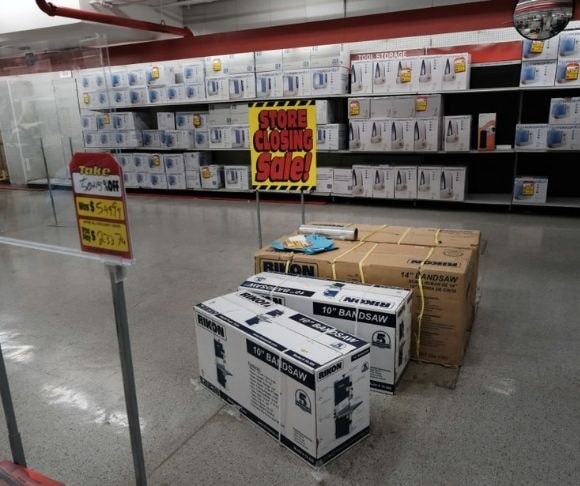After more than a decade of quantitative easing (QE) efforts – a blend of artificially low interest rates and balance sheet expansion – the Federal Reserve gave life to zombie companies. The era of easy money policies allowed these firms – entities that only generate enough revenue to service their debt or sustain operations – to survive harsh business conditions. When the COVID-19 pandemic nudged the Eccles Building and Washington to fire off the mother of all fiscal and monetary stimulus bombs, they survived and thrived. Now that the ball of time and opulence has ended, will these zombie businesses fold faster than Superman on laundry day?
Zombie Companies Shall Roam the Earth
 Is the United States about to drown in a corporate bankruptcy wave? New data compiled by Bloomberg revealed that the country witnessed the largest number of major companies (businesses with a minimum of $50 million in liabilities) file for bankruptcy at the start of the year since 2010. According to the business news network, there were 20 filings in January, up from just a handful at the same time a year ago.
Is the United States about to drown in a corporate bankruptcy wave? New data compiled by Bloomberg revealed that the country witnessed the largest number of major companies (businesses with a minimum of $50 million in liabilities) file for bankruptcy at the start of the year since 2010. According to the business news network, there were 20 filings in January, up from just a handful at the same time a year ago.
The journey of interest rates has become a relevant experience since the economic collapse. In 2010, the benchmark federal funds rate (FFR) was nearly 0%. In Jan. 2022, interest rates were also close to zero. A month ago, the FFR was above 4%. Put simply, borrowing money and servicing debt is much more expensive now than it was in the aftermath of the global financial crisis and the coronavirus pandemic. This is especially true for private firms that are struggling to keep their doors open.
But are zombie companies prevalent enough to impact the national economy? The estimates vary. David Trainer, the CEO of investment research firm New Constructs, told Fortune that approximately 300 publicly traded businesses had been zombified. Goldman Sachs recently projected that there are fewer than one-fifth of US-listed “firms that haven’t produced enough profit to service their debts.” Deutsche Bank revealed in a 2021 study that one-quarter of US companies were zombies. The Federal Reserve reported last year that just 10% of firms listed on the New York Stock Exchange were victims of a zombie attack.
Even if the total number of these institutions was not enormous enough to trigger a recession, zombie companies could weigh on a country’s long-term economic growth potential since they waste capital and divert credit, investment, and skills from pouring into far more successful companies. Moreover, at a time when the flood of easy money has stopped flowing throughout the financial system, the competition for capital is fierce, particularly in a more globalized economic landscape.
“If we don’t have efficient and productive capital markets, we lose probably one of the biggest competitive advantages that we have as a country, which is our ability to allocate capital more efficiently and rapidly to its highest and best use,” Deutsche Bank Strategist Jim Reid in a report. “And that’s part of the problem. People forgot that this is what the capital markets are about. They’re about allocating capital to its highest and best use.”

(Photo by Spencer Platt/Getty Images)
Perhaps the market will resolve this problem since the cost of capital for junk bonds – debt instruments below investment grade – has skyrocketed to about 15%. In addition, many financial experts forecast that there will be an enormous number of defaults by zombie companies in the coming years. That is, of course, unless the US central bank adopts another round of zero-interest-rate policies.
A Global Zombie Apocalypse?
While all the focus is on the US-listed zombie companies, Europe maintains a sea of such entities. Remember, the European Central Bank (ECB) and the Bank of England (BoE) also implemented ZIRP and even NIRP (negative interest rate policy), creating an inventory of zombie corporations. In 2021, there were about 400 businesses in the European Union and Great Britain. Japan experienced a “Lost Decade” in the 1990s – and some say it continues today – that resulted in the private sector being invaded by these zombies because the Bank of Japan (BoJ) and financial institutions supported these weak and failing businesses. The Chinese economy is also filled with zombie firms as they are typically bailed out or absorbed by large corporations.
Now that most of the developed world is pulling the trigger on rate hikes and tightening monetary policy, will this create a contagion effect? This is the concern, but the antidote might be the Fed and its global counterparts hitting the pause button, pivoting, and cutting interest rates in response to a slowing economy. When there is no more room in a hell of higher interest rates, the dead shall walk on a planet of perpetual easy money tools.




